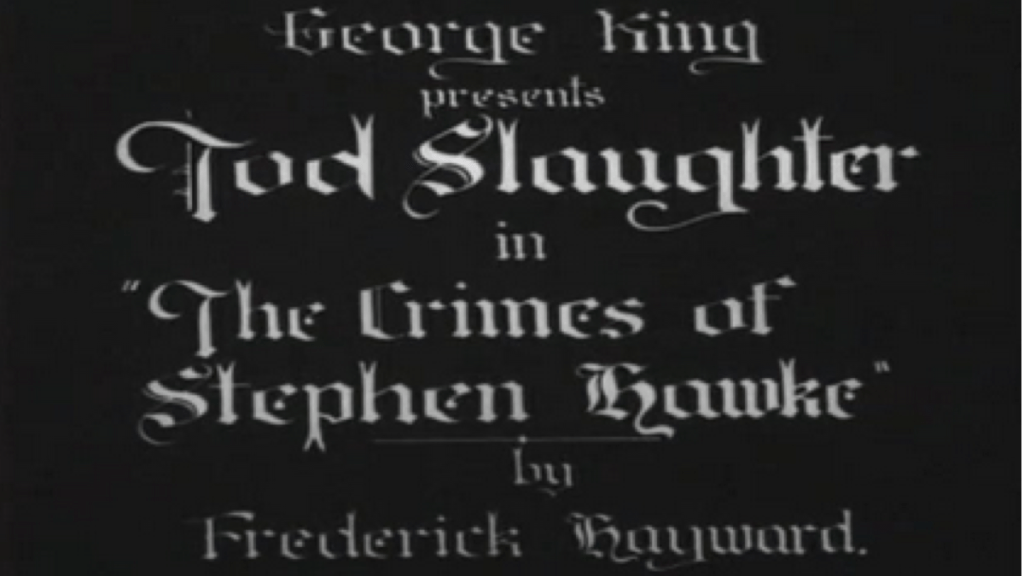
The fact that key roles in both movies are played by Tod Slaughter, Eric Portman, and D.J. Williams caused me to automatically compare The Crimes of Stephen Hawke (1936) with the trio’s earlier film, Maria Marten, or the Murder in the Red Barn (1935.) That further caused me to compare Slaughter’s two performances. My conclusions is that it is not as “theatrical” in Stephen Hawke as it was in Maria Marten, and therefore not quite as entertaining for me.
In Maria Marten, like it or not, I could not take my eyes off Slaughter. But here, his performance as the titular character, moneylender by day, serial killer by night, isn’t quite as exaggerated. Perhaps that’s one reason he also seems more dangerous. Sure his previous character, Squire William Corder, shot a pregnant woman and buried her in a red barn, but his Stephen Hawke opens this film by killing a young boy for no apparent reason.
He plays a bit of a Clark Kent character, who by simply donning glasses and walks with a cane, becomes another person. Everyone loves Hawke and believes he’s done such wonderful things for them, yet they also fear the “Spine Breaker” because, well… he’s a serial killer. Surely a crippled old man would have have the strength to leave the types of marks that the Spine Breaker leaves on his victims’ bodies.
What a grip that fiend must have!
Then, with little cause to question Hawke’s character, Joshua Trimble (Williams) notices that his friend’s hands “have sinews of steel!” He asks his son, Matthew (Portman) to assure him he’s wrong. When he’s the next victim, though, Matthew is certain that Hawke is guilty and sets a trap that indeed proves it. This is all well and good, but the movie is only about halfway through its 69-minute running time.
That leaves the rest of the film to depict Hawke and his accomplice, Nathaniel (Graham Soutten), fleeing while Matthew follows him. That’s less well and good, at least as far as my interest and enjoyment went in this film. By the way, Nathaniel isn’t a suspicious character at all. He, like the actor in real life, is/was a hunchback, has/had one leg, and wears/wore an eye patch. (He previously appeared in Sweeney Todd as Beadle.)
Slaughter called The Crimes of Stephen Hawke “a new old melodrama.” Emphasizing the Victorian melodrama style, Slaughter/Hawke flee to the roof not once, but twice. Only the second time has consequence, though. SPOILERS AHEAD! His pursuers don’t cause him to fall, but a brick breaks loose and he lands splat at the feet of his adopted daughter, Julia (Marjorie Taylor in her film debut) and Matthew.
Over-emphasizing the Victorian melodrama, Hawke uses his dying words to reveal to Julia for the first time that she’s adopted and therefore shouldn’t feel bad about hating him for his secret life as a serial killer. She, in turn, doesn’t care that he was a serial killer; she loves him all the same. Awwww, isn’t that sweet? Perhaps if he had known how she felt earlier he would have turned over a new leaf and put those sinews of steel to better use.


Leave a comment